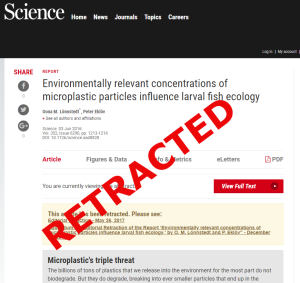The following post is one of a series previewing the research that will be presented at the in Rome, Italy (13-17 May 2018).
A guest post by Annegaaike Leopold, Thomas-Benjamin Seiler, and Charmaine Ajao
‘’How do we communicate accurately about the real risk posed by chemicals and other contaminants in the environment as distinguished from emotions and fears?‘’
Attaining a shared understanding of findings from environmental research among scientists, policy makers, and the public is a challenge. However, the critical importance of this is increasingly recognized, especially if we want to clearly communicate risks and support informed decisions that will protect human health and the planet, building on scientific facts rather than individual opinions. SETAC Europe takes up this challenge as part of the strategic plan 2018, with eight strategic goals to be reached by 2020, with one goal being to “support science-based risk communication.”
A number of organizations facilitate discussion between researchers and citizens to promote public debate. Some do this as their core business, such as the independent campaigning organization Sense About Science (SAS), based in the UK and Brussels. Others do this as part of their regulatory work, such as the European Chemicals Agency (ECHA, in Finland). SAS has developed approaches to break through polarized and difficult debates, allowing researchers to identify gaps and misunderstandings in the public debate and respond to them. ECHA has transparency as one of its driving values in using scientific information provided by academia and industry and applying it within the regulatory framework in which it operates.

Lönnstedt and Eklöv (2016), retracted by Science in 2017.
Topics that are currently of strong societal concern include endocrine disruptors, nanomaterials and microplastics. In the Special Session to be held at the Annual Meeting of SETAC Europe in Rome, these three topics will be addressed from different angles to help us develop further insight into how we can optimally communicate findings from environmental research among scientists, policy makers, and the public. In the case of endocrine disrupting substances, given their potential to impact human health, organisms, and populations in the environment, clear communication about the risks of these substances is essential in order to prioritize research and develop sound regulation around the world. The long-term toxicity of nanomaterials is not well understood, and these materials are therefore of emerging public concern. Both scientists and the media can play a key role in communicating what we know and what still needs to be researched. Finally, there is an urgent need for a critical approach to microplastics research, in the face of public concern about the disastrous effects of macroplastics on wildlife. Behavioral and societal change driven by the public’s awareness about the impact of their decisions on their health and the environment become as important as sound scientific research.
Session information: Towards a shared understanding of science and risk communication in the context of the inevitability of chemicals and the hazard they may represent
16 May 2018 | 10:50 – 15:30 | Room Q
